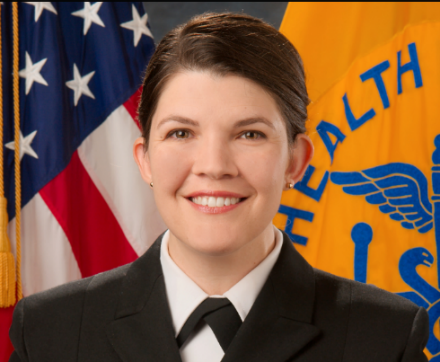HOW DID YOU BECOME A ONE HEALTH LEADER?
Origins
Growing up in rural Texas, young Casey knew she wanted to be a veterinarian by the time she was 8 years old. She immersed herself in youth activities around animals (seriously involved with goats, poultry, dogs, hamsters and llamas!), and made sure she could spell ‘veterinarian’ correctly. When she volunteered in a veterinary practice during her undergraduate studies, she found something that interested her even more than the one-on-one interactions in a clinical setting. A client came in with a large collection of worms that had emerged from his puppy, and she was intrigued. She quickly realized that intestinal worms could be zoonotic and added yet another species—humans!—to her interests. And thus, a One Health disease detective was born! Her educational path continued her multi-species worm interests with a Doctor of Public Health (DrPH) project identifying human carriers for the Taenia tapeworm on the Texas-Mexico border. Note also the international nature of the project — more on that later!
Education and mentorship
After her early epiphany that she wanted to be involved with zoonotic diseases, Dr. Barton Behravesh sought out related opportunities through her studies including the Epidemic Intelligence Service (EIS) fellowship at the Centers for Disease Control and Prevention (CDC). She was fortunate to have wonderful mentors, from her senior year as a Texas A&M undergrad, when she was enchanted by a parasitology course with Dr. Karen Snowden, to her remarkable ability to become the last mentee of one of the founders of One Health, Dr. Jim Steele, during her doctoral training at the University of Texas at Houston Health Science Center School of Public Health. Both Dr. Snowden and Dr. Steele challenged and guided her in her training. Dr. Snowden helped bring an environmental perspective into the connection between people and animals and broadened Dr. Barton Behravesh’s One Health thinking. EIS became her focus as she pursued a Master’s in parasitology in Dr. Snowden’s lab before attending veterinary school. Her doctoral studies in public health and disease control (DrPH) introduced her to Dr. Jim Steele, then professor emeritus, who mentored her until he passed away at the age of 100. He encouraged her to do her veterinary degree and her DrPH concurrently. While it was extremely arduous (“I would NOT recommend it”), she was able to reconnect with Dr. Snowden at Texas A&M for her dissertation project and more superb mentoring. In a fitting end to the tale of her early curiosity with worms, her thesis project focused on human tapeworm carriers of the Taenia tapeworm. The work required work across professional and international borders, foreshadowing her future in One Health and global health work.
In addition to having spectacular mentors, Dr. Barton Behravesh emphasizes the importance of having had the opportunity to work in a lab in her preparation for her One Health leadership position. Researcher training emphasizes the need to be curious, pursue inquiries independently, and question everything. By contrast, absorbing and applying existing knowledge is the hallmark of clinical training and can foster the tendency to go it alone.
WHAT IS THE IMPACT OF YOUR POSITION? HOW HAS COVID-19 AFFECTED YOU?
Dr. Barton Behravesh’s impact in one line is that she is a disease detective who serves as a connector and relationship builder to protect health for both people and animals using a One Health approach: a collaborative, multisectoral, and transdisciplinary approach—working at the local, regional, national, and global levels—with the goal of achieving optimal health outcomes recognizing the interconnection between people, animals, plants, and their shared environment.
The One Health Office at the CDC was established in 2009, the first federal agency to create such a coordinating office. It was created by Dr. Lonnie King, who was a CDC center director and a pioneer in veterinary public health. Dr. Barton Behravesh is the second director, now in her sixth year. As Director, she works with partners across the US government to help further One Health efforts and build One Health networks domestically. For example, during the COVID-19 pandemic, she brought together more than 20 federal agency representatives as part of the CDC One Health Office created One Health Federal Interagency COVID-19 Coordination group which was developed to coordinate One Health efforts and develop guidance related to the One Health aspects of COVID-19. This is a stellar example of ensuring collaboration and early exchange of information to address complex and emerging problems.
As Director, Dr. Barton Behravesh has also had the opportunity to drive One Health collaborations around the globe. Her combined veterinary and epidemiology training makes her expertise key to addressing shared challenges across professional and national boundaries. She notes that when putting together a team to address a complex question, stop first and think—who else needs to be involved now? And then move forward to capture all the right people to handle all the pieces.
How has COVID-19 affected you this year? Eyes and ears around the world have been opened about the critical need to work across disciplines and sectors with common goals to best address public health challenges. “2021 will be the year to advance One Health!”
WHAT HAS SURPRISED YOU IN YOUR CAREER?
It continues to be the case that people are confused about why a veterinarian is involved in public health. For example, among all the 13,000 CDC employees, about 150 are currently veterinarians. However, she has seen progress over time, as veterinarians have been key to managing Ebola, foodborne illnesses, and a variety of zoonotic outbreaks. With the intense interest in COVID-19 and its animal origins, people’s eyes have been opened. She always tells people to be patient when helping people new to One Health to understand why it is important, “sometimes we’re chipping off one ice cube from the iceberg at a time.”
WHAT ADVICE/LESSONS WOULD YOU LIKE TO CONVEY TO WVLDI READERS?
Dr. Barton Behravesh’s answer demonstrates her ability to be patient, flexible, and listen and learn: Distill your messages, communicate clearly in a way that those who need to hear it can understand, be aware of the others’ needs and constraints—keep the end goal in mind. Also, put yourself in your partner’s shoes as much as you can; what is different and what might you not understand? Look for the “highest common denominator”—what is the broadest, loftiest shared goal? (A hallmark of Dr. Barton Behravesh’s thinking, this term appears to be relatively new; I found it here: https://thefearlessheart.org/store/the-highest-common-denominator/ January 1, 2021)
The final lesson: It is easy to be discouraged when the millionth person asks why a vet is involved in public health. But if you think of lack of awareness about the role of vets as an iceberg, also consider every opportunity to educate people to be another chance to chip off another ice cube! We’ll keep chipping at that iceberg and get it out of the way if we persevere and keep working together!


